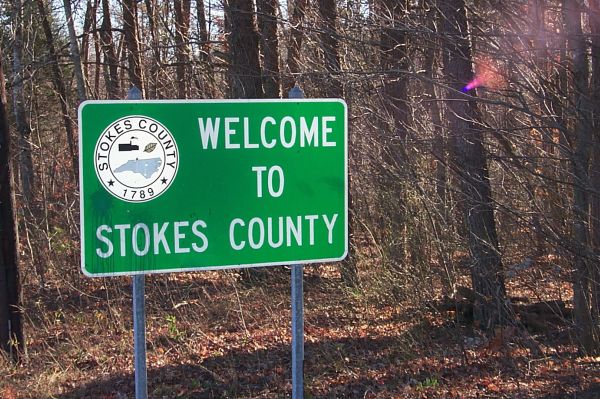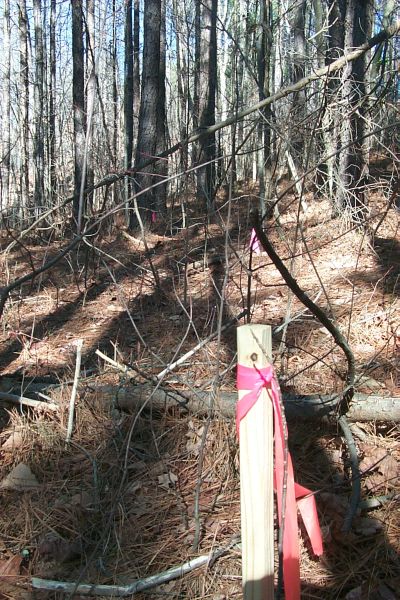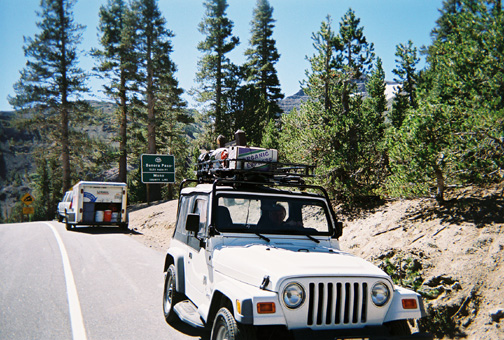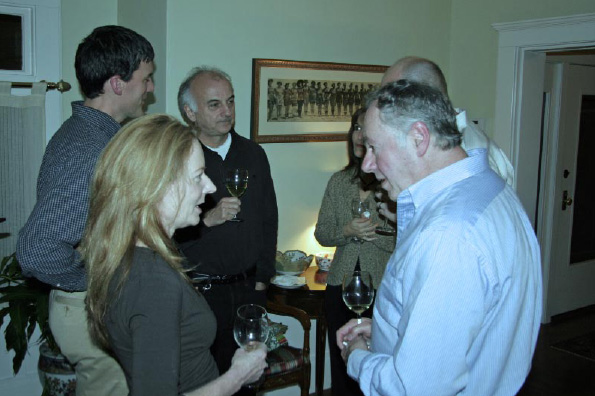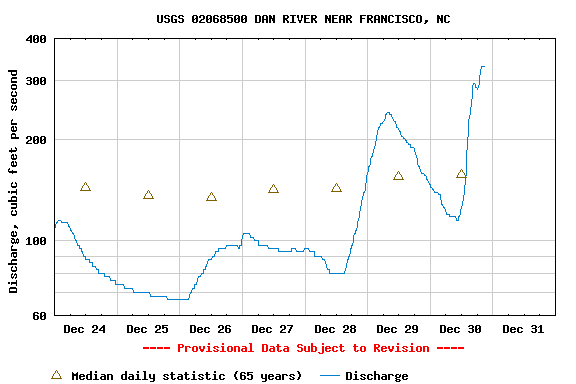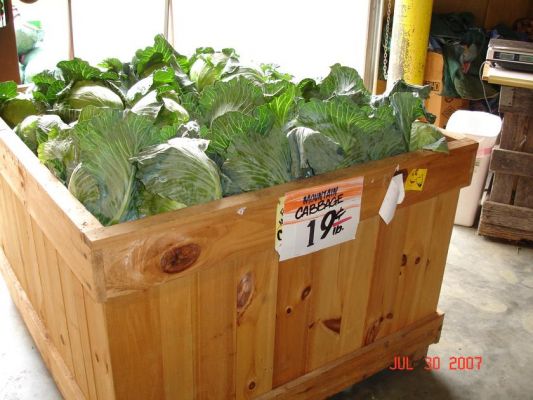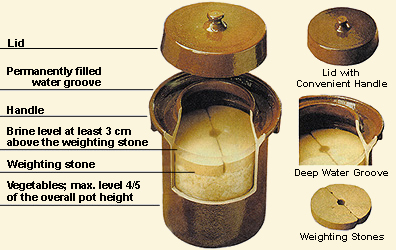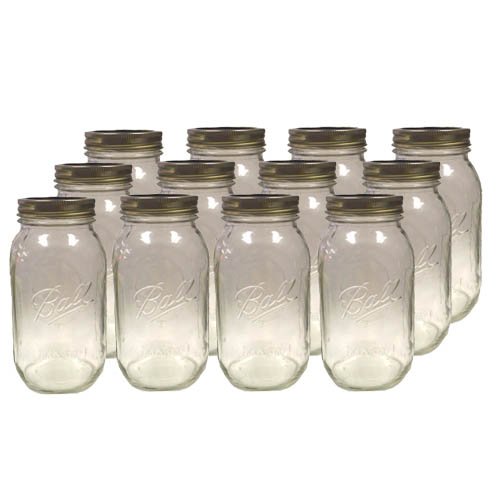I got quite a lot done in Stokes County on Thursday. The people in the building permits office in Danbury were delightful to work with. I explained my intentions and showed them the blueprints for the house and wellhouse. In no time at all I had permits for the wellhouse and for the temporary electrical hookup (the cost for the two permits was $90). It’s a little too early to get the permit for the house itself, but at this point that’s the only permit I still need. All the other permits — wellhouse, temporary power, the well, and the septic tank — are taken care of.
Then I went out to the land and put in some stakes (around here we call them “stobs”) and flags to mark approximate locations of the house, the wellhouse, and the driveway. On Sunday, I’ll go back with my brother and sister to let them have a look at the location of everything. Once that’s all settled, the next step will be to get the tree guy to come take a look. I’ll only need to take out pine trees — no need to take out any of the mature hardwood trees. Among the pines there are many young hardwoods, mainly poplar and maple, eager to have room to grow. I hope we can take out the pine trees with minimum damage to the young hardwoods. They should grow quickly once the pines are gone and they have light and space.
The big rock is surprisingly difficult to photograph. But I tried.

